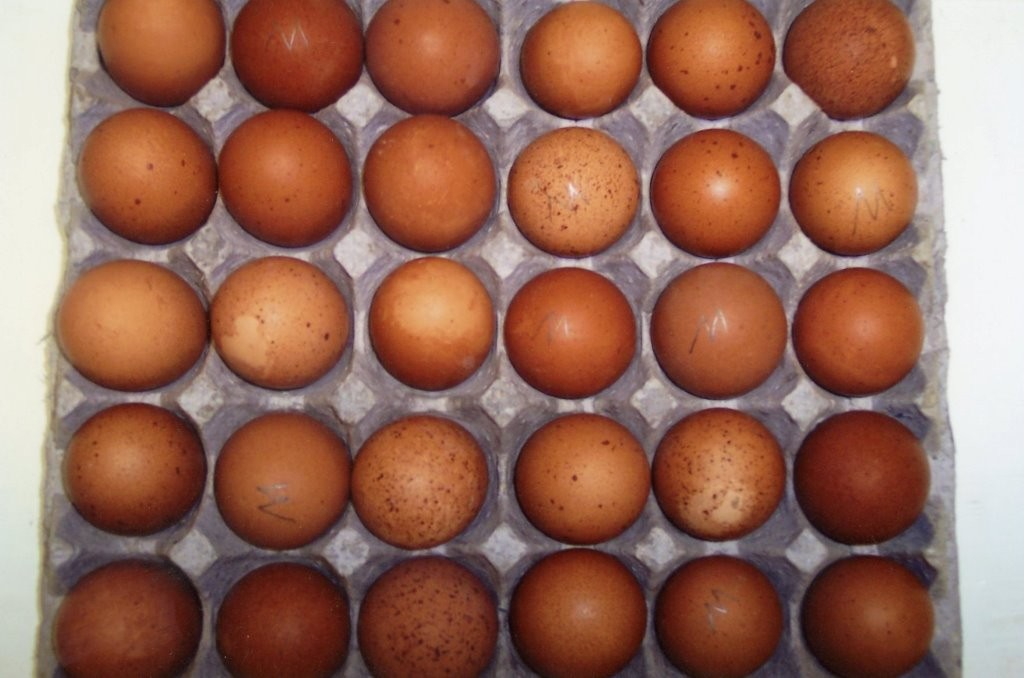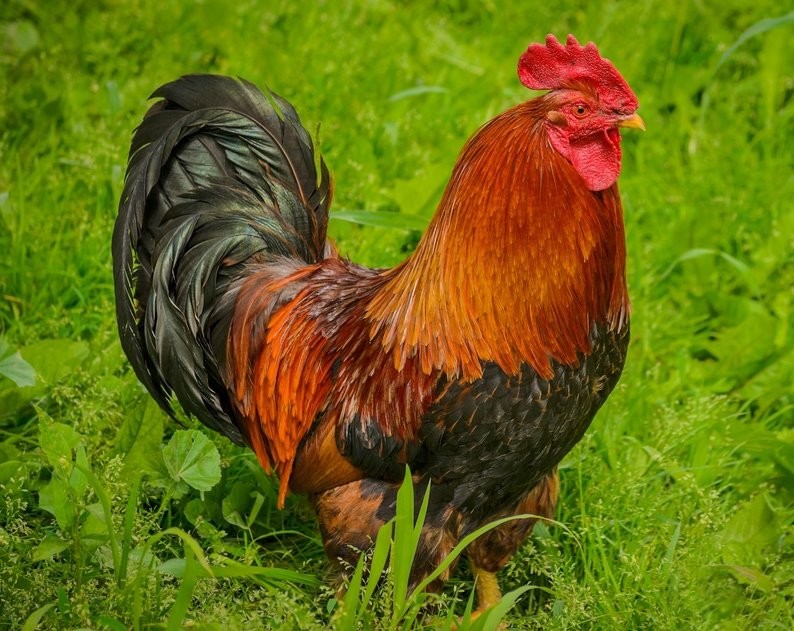
A dark brown, speckled egg adds a finishing touch to any beautiful egg basket. Just a few birds lay such gorgeous speckled eggs, and they stand out. Five little Welsummers were among the first batch of chickens I raised. The hens’ look, as well as the variety they brought to my nesting boxes, drew me in. I’m sure you’ll adore them as much as I did when you get them.

About Welsummer Chickens
Welsum is a tiny town in the eastern Netherlands. Around the turn of the twentieth century, Welsummers were developed in this town from a variety of indigenous chickens. Barnevelders, Partridge Leghorns, Cochins, and Wyandottes are just a few of the breeds found in Welsummers background.
In the United Kingdom and Australia, Welsummer chickens are well-known, but in the United States they are relatively uncommon.
Welsummer Characteristics

1. Size and Weight
Welsummers were developed as a dual-purpose breed at first. They aren’t the biggest dual-purpose fowls I’ve ever seen, but they are decent. Roosters reach seven pounds, while a full-grown hen weighs around five pounds. Welsummers have a rather large carcass, despite their weight, which gives them a taller appearance.
2. Temperament
The personalities of Welsummers are quite lovely. These birds are inquisitive, docile, and affectionate, making them ideal barnyard pets in addition to being clever. Hens that are broody are not uncommon in Welsummer hens. When they do hatch chicks, they are incredibly doting and protective as mothers.
3. Egg Production
Egg production in Welsummer chickens is acceptable. The Welsummers lay jumbo-sized eggs, which is an advantage over other breeds with greater productivity. A single hen will lay 160-180 enormous and stunning eggs each year.
4. Meat Production
There is more to a meat bird than the size of the chicken, despite the fact that its carcasses aren’t huge. Welsummers has some amazing meat. Something has to happen to those extra roosters, whether you breed Welsummers or not. A six-month-old cockerel should produce a decent sized carcass.
Taking Care of Welsummers

1. Feeding and Nutritional Needs
Welsummers are a low-maintenance bird that will be content with just a few handfuls of mash each day. You can get excellent laying feed at your local feed store, as well as oyster shell calcium supplements, if you need them.
Supply your hens with additional calcium in a separate dish, so they may eat it when they require it. Your Welsummers enjoy chasing after insects and eating grass if you have the space and want to free range them.
2. Housing and Fencing
Because they aren’t particularly large, Welsummers don’t need a lot of room to be satisfied. Three to four square feet per bird is adequate to ensure that everyone has enough space in the coop to maintain a decent living environment. If you choose to keep your birds in a run, ten square feet per bird ensures that everyone has enough room to stretch their legs.
3. Health Issues and Care
Welsummer chickens are a hardy breed that is not prone to many health problems.
In chilly weather, their large comb, particularly on roosters, may be a worry. With bigger combs, frostbite is more likely. Make sure to have a well-insulated coop if you live in a colder climate. Some chicken keepers’ roosters have a coating of Vaseline on their combs to keep them looking nice.
4. Breeding
Because they are an autosexing breed, welsummers are a lot of fun to breed. Because of the color of their down, you can determine the gender of the chicks as soon as they hatch. With most birds, you’ll need to wait at least a few weeks before you see any gender indicators.
Welsummer chicks are browner in color than male Welsummer chicks. Since Welsummers are still fairly new in the United States, if you decide to breed them, there is a market for the birds.
Alternative Breeds
1. Marans
Although Marans do not lay as many speckled eggs as Welsummers, they do have some truly remarkable dark brown eggs. Marans, like Welsummers, are a dual-purpose breed that weighs a few pounds more. Marans have a somewhat lower annual egg output than Welsummers, with 150 eggs produced each year.
2. Wyandottes
Wyandottes are a lovely dual-purpose breed that does not produce dark eggs. These birds, which average 200 eggs per year, have greater productivity than Welsummers. Since Wyandottes were utilized in the breeding of Welsummers, they look a lot like Welsummers. Wyandottes are your bird if you want a somewhat bigger bird with better production than the Welsummers.
Did you know?

Given that they aren’t particularly well-known among the general backyard flock, they’re most likely quite popular in your kitchen cabinet. On the front of Kellogg’s cornflakes package, there’s a chicken. He’s a Welsummer who goes by the moniker Cornelius or Corny, according to his bio.
The Welsummer’s lovely brown egg? You love it, don’t you? You can scrub off all the color if you put it in hot water with a scrubby. Since pigment is added after the egg is formed, the color it has is due to pigment.
I don’t believe you’ll regret adding these birds to your flock, despite the fact that they aren’t very well-liked yet. Their tiny size makes them highly feed-efficient, and who can turn down those irresistible eggs?! I adore my Wellies immensely.
